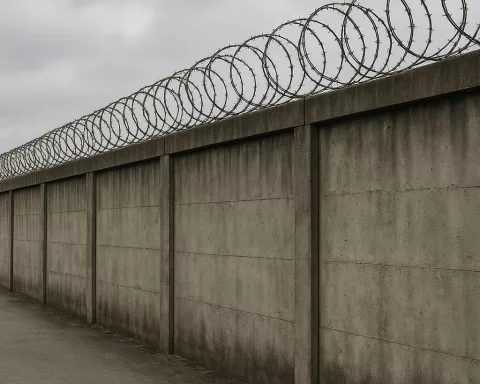In a groundbreaking partnership, South Africa and China have created the world’s longest ultra-secure quantum satellite link! This amazing achievement allows for super safe data transmission that can’t be broken into. Using a special technology called Quantum Key Distribution (QKD), scientists can send secret messages between the two countries with incredible security. With perfect weather conditions in Stellenbosch, they generated over a million secure bits in just one satellite pass! This collaboration shows how teamwork can open doors to a new world of communication and safety, reminding us that great things happen when nations unite.
What is the significance of the South Africa-China quantum satellite link?
The South Africa-China collaboration has established the world’s longest ultra-secure quantum satellite link, enabling real-time Quantum Key Distribution (QKD). This breakthrough allows for unbreakable data transmission, showcasing the potential of international cooperation in advancing quantum communication technology and enhancing global data security.
In a monumental step forward in quantum communication, South Africa and China have successfully established the world’s lengthiest ultra-secure quantum satellite link. This pioneering achievement, reported by Cape {town} Etc, highlights the immense potential for secure global data transmission. The joint effort between Stellenbosch University and the University of Science and Technology of China was made possible by leveraging the Chinese quantum microsatellite Jinan-1, launched into low Earth orbit, and a demonstration of Quantum Key Distribution (QKD).
The Heart of Quantum Security
Quantum Key Distribution (QKD) stands at the core of this groundbreaking project, facilitating the generation of quantum keys in real-time. This state-of-the-art technology enabled the secure transmission of images between ground stations in China and South Africa using a one-time pad encryption method, which is deemed unbreakable. The details of this remarkable feat were published in the prestigious journal Nature, further highlighting the collaborative spirit that underpins this initiative.
The success of this project was significantly influenced by the favorable environmental conditions in Stellenbosch, characterized by clear skies and low humidity. These ideal conditions allowed for an exceptional key generation rate of 1.07 million secure bits during a single satellite pass. This underscores the importance of atmospheric clarity in quantum communication, where the efficiency and reliability of data transmission can be significantly impacted by environmental factors.
Quantum Mechanics and Unparalleled Security
Quantum communication utilizes the fundamental principles of quantum mechanics to ensure secure information transfer. In QKD, single photons encode and transmit secure keys, making them impervious to interception, copying, or measurement without altering their quantum states. This technology offers unparalleled security, even against the most formidable adversaries. The Heisenberg Uncertainty Principle, a cornerstone of quantum mechanics, guarantees that any attempt to eavesdrop on the communication changes the state of the quantum bits, alerting the communicating parties to the presence of an intruder.
China has been a leader in quantum communication technology under the guidance of renowned quantum physicist Prof. Jian-Wei Pan. The country boasts a robust quantum infrastructure, including a 2,000 km terrestrial fiber-based quantum network that connects 32 trusted nodes across major urban centers from Beijing to Shanghai. This infrastructure has laid the groundwork for numerous advancements in quantum communication, including the notable 7,600 km link between China and Austria established in 2017.
Prof. Pan and his team, including Yin, who played a crucial role in developing China’s first quantum satellite, Micius, have set significant benchmarks in satellite-based quantum connections. Yin once again led the Chinese research team in the South Africa-China collaboration, demonstrating his expertise and commitment to advancing the field of quantum communication.
South Africa’s Quantum Advancement
On the South African side, Dr. Yaseera Ismail, the lead experimentalist at Stellenbosch University’s Department of Physics, successfully established the quantum satellite link. Her mentor, Prof. Francesco Petruccione, a prominent figure in quantum computing and Director of the National Institute for Theoretical and Computational Sciences (NITheCS) at Stellenbosch University, played a pivotal role in advancing quantum communication in South Africa. This accomplishment not only showcases the capabilities of South African scientists but also paves the way for future developments in the field.
The forthcoming launch of the Stellenbosch Centre for Quantum Science and Technology aims to cement South Africa’s leadership in quantum research and innovation. Reflecting on the significance of this breakthrough, Dr. Ismail emphasized the vital role of collaboration in scientific progress. She noted, “International and national collaborations are essential to drive cutting-edge research and push scientific boundaries. Implementing the first quantum satellite link in the Southern Hemisphere is an outstanding achievement for South Africa, demonstrating the potential to develop a thriving quantum ecosystem.”
Prof. Petruccione echoed her sentiments, asserting that the successful demonstration of quantum satellite technology solidifies South Africa’s position as a significant player in the rapidly evolving global quantum technology landscape. He remarked, “Collaborations such as this accelerate scientific breakthroughs, build local expertise, and enable translating advanced quantum research into tangible technological solutions.” His words underline the importance of international partnerships in driving innovation and scientific progress.
The Broader Implications
Professor Sibusiso Moyo, Deputy Vice-Chancellor for Research, Innovation, and Postgraduate Studies at Stellenbosch University, highlighted the broader implications of this achievement. He observed, “This breakthrough underscores the importance of supporting and investing in the basic sciences such as quantum computing.” His statement reflects a broader understanding of the role that fundamental research plays in technological advancement and societal progress.
This quantum satellite link not only represents a technical milestone but also serves as a testament to human ingenuity and collaboration. The project showcases the power of international cooperation in pushing the boundaries of what is possible and paving the way for a more secure and connected world. It stands as a beacon of what can be achieved when nations come together to tackle complex scientific challenges.
The convergence of South African and Chinese expertise in quantum communication is reminiscent of historical and artistic movements like the Renaissance, where art and science intertwined to usher in a new era of discovery. Just as Renaissance artists pushed the boundaries of what was considered possible, today’s quantum researchers are redefining the limits of secure communication.
As we stand on the brink of a new era in quantum technology, the accomplishments of these scientists inspire a sense of wonder and possibility. They remind us that through collaboration, dedication, and an unyielding pursuit of knowledge, we can achieve extraordinary feats that shape the future of our world.
FAQ: South Africa-China Quantum Communication Collaboration
What is the South Africa-China quantum satellite link?
The South Africa-China quantum satellite link is the world’s longest ultra-secure communication link established through a collaboration between South Africa and China. Utilizing Quantum Key Distribution (QKD) technology, it allows for real-time secure data transmission between the two countries.
How does Quantum Key Distribution (QKD) ensure security?
Quantum Key Distribution (QKD) uses the principles of quantum mechanics to create secure communication channels. It involves encoding information in single photons, making it impossible for an outsider to intercept or copy the data without altering its quantum state, which alerts the communicating parties to the presence of an intruder.
What was achieved during the satellite pass in Stellenbosch?
During a single satellite pass over Stellenbosch, the team generated over a million secure bits of data, achieving an exceptional key generation rate of 1.07 million secure bits. This feat was significantly aided by the favorable weather conditions in the region, which provided clear skies and low humidity.
Who are the key contributors to this project?
Key contributors include Dr. Yaseera Ismail from Stellenbosch University and Prof. Francesco Petruccione, who is a leader in quantum computing in South Africa. On the Chinese side, Prof. Jian-Wei Pan and his team, including Yin, played crucial roles in developing quantum technologies and establishing the collaboration.
What are the broader implications of this quantum satellite link?
The successful establishment of this quantum satellite link demonstrates the potential of international cooperation in advancing quantum technology. It highlights the importance of investing in fundamental sciences and could lead to advancements in secure communication globally, marking a significant milestone for both South Africa and China in the field of quantum research.
How does this collaboration reflect on the future of quantum technology?
This collaboration exemplifies how teamwork between nations can drive scientific breakthroughs and innovation. It signifies a commitment to advancing quantum research and technology, paving the way for a potential thriving quantum ecosystem in the Southern Hemisphere and beyond. As nations come together to address complex scientific challenges, remarkable achievements can be realized.








